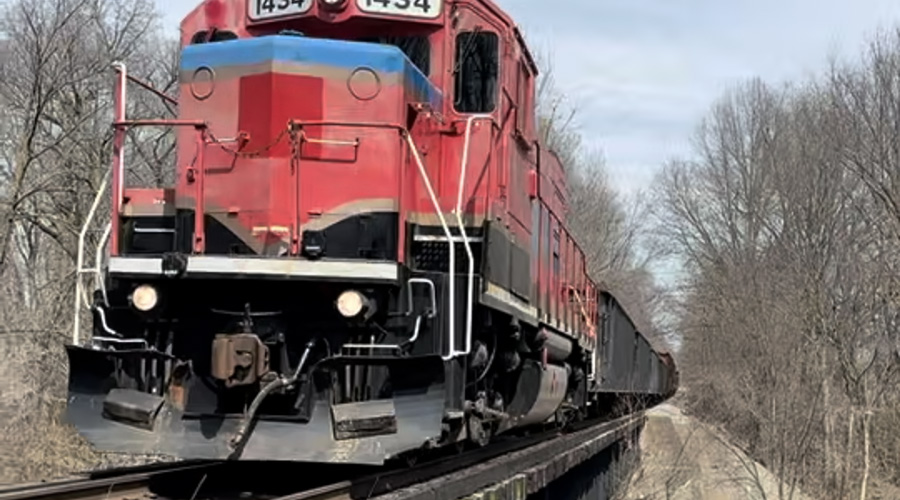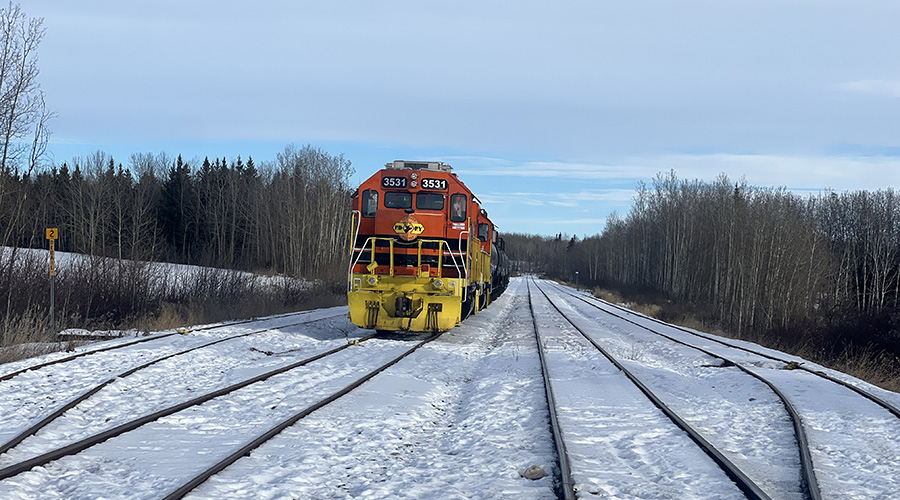North Carolina Railroad amps up industrial development pursuits with ‘Build Ready Sites’ program
9/23/2021
By Jeff Stagl, Managing Editor
The North Carolina Railroad Co. (NCRR) owns and manages a 317-mile rail corridor between Charlotte and Morehead City that is leased by Norfolk Southern Railway and used in part by CSX. NCRR is a private corporation with all of its stock owned by the state of North Carolina.
About six years ago, state officials decided the railroad's revenue stream should be devoted to economic development to help increase rail traffic on the corridor and create more jobs in North Carolina.
Since then, the railroad has focused heavily on industrial development projects along the corridor, offering to cover any associated rail infrastructure costs. Those efforts helped convince 21 companies to build or expand plants along the rail lines.
In 2020, NCRR landed a new Charlotte Pipe & Foundry plant in Oakboro and a Nestle Purina Petcare Co. facility in Rockingham County.
NCRR provided $1.5 million to help Charlotte Pipe build an industrial lead track for the plant, which will be served by the Aberdeen, Carolina and Western Railroad, a short line that interchanges with both CSX and NS. And NCRR and NS will cover the $1.9 million costs to reestablish a rail line for the Nestle Purina project, which involves repurposing a former Miller-Coors manufacturing facility.
NCRR’s industrial development efforts are bearing fruit in 2021, as well. Liberty Storage Solutions plans to expand its production facility in Davie County and NCRR will provide $350,000 to help fund a rail spur so the plant can be served by NS.
In addition, Red Bull, Rauch and Ball Corp. plans to construct a 2 million-square-foot beverage manufacturing campus in Cabarrus County, for which NCRR will provide $700,000 to rehabilitate a lead track to establish NS service.
 Through its new Build Ready Sites program, NCRR and its partners provide matching funds for such upfront expenses as land preparation costs. Shown: Site work underway for a new plant in Conover, North Carolina. North Carolina Railroad Co.
Through its new Build Ready Sites program, NCRR and its partners provide matching funds for such upfront expenses as land preparation costs. Shown: Site work underway for a new plant in Conover, North Carolina. North Carolina Railroad Co.NCRR officials believe there’s more the railroad can do to help the state tap into the thousands of companies seeking rail-served sites in the southeastern United States. Enter Build Ready Sites, a program NCRR launched in May to take industrial development pursuits to the next level.
Through Build Ready Sites, the railroad aims to partner with communities, economic development authorities and other railroads in the state to provide matching funds for these upfront expenses: land preparation, speculative building construction, and water and/or sewer service.
Partners will provide up to $500,000 — up to $750,000 if a site is located along NCRR’s corridor — to cover 60% of total project costs.
The program is designed to act as a catalyst to advance more rail-served sites to a development-ready position, says NCRR Vice President of Economic Development Anna Lea Moore.
North Carolina has a substantial amount of land available for development along active rail corridors, she says. The program can provide the state a competitive advantage by offering development-ready rail industrial sites in varying sizes and geographies.
Build Ready Sites’ objective is to remove industrial development barriers and improve projects’ time-to-construction predictability to 18 months or less.
“A lack of development-ready sites forces some companies to eliminate North Carolina from their site search,” says Moore. “We see this as an opportunity to fill a gap.”
The program targets sites with 50 to 100 contiguous and developable acres located within a half mile or less of a rail line. Build Ready Sites prioritizes properties that have a high level of economic distress, are located in a rural area, have access to industrial-grade utility infrastructure and transportation infrastructure — including rail lines, interstates and ports — and will be greatly impacted by NCRR funding for development readiness.
"We have found that rail users typically need 50 to 100 acres for a project,” says Moore.
So far, NCRR has received 18 applications for Build Ready Sites. The potential projects are in various areas — mostly in rural areas — and involve a mix of Class Is and short lines, says Moore. The applications will be vetted against about 100 criteria points, she says.
Build Ready Sites has the potential to be a game changer in advancing the state’s competitive position and fostering industrial development, Moore believes. There likely is no other entity in the nation focusing on the development-readiness and marketing of a state’s rail-served sites, she claims.
“There is a substantial lack of funding and resources available to assist communities in their site development efforts, and that’s why we are stepping into this space with this program,” says Moore. “North Carolina can be distinctly more competitive in the recruitment of the jobs created by rail-served companies.”


